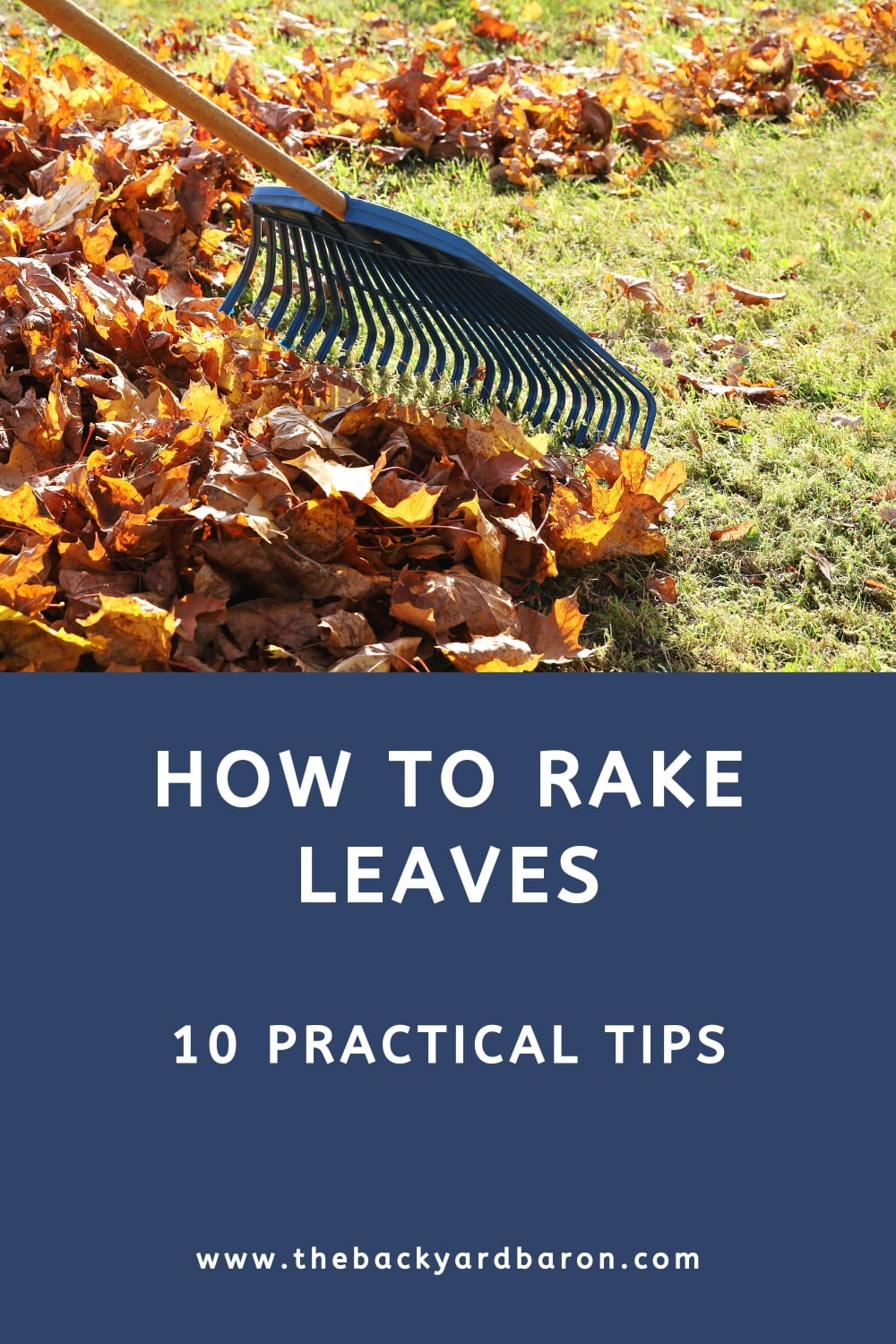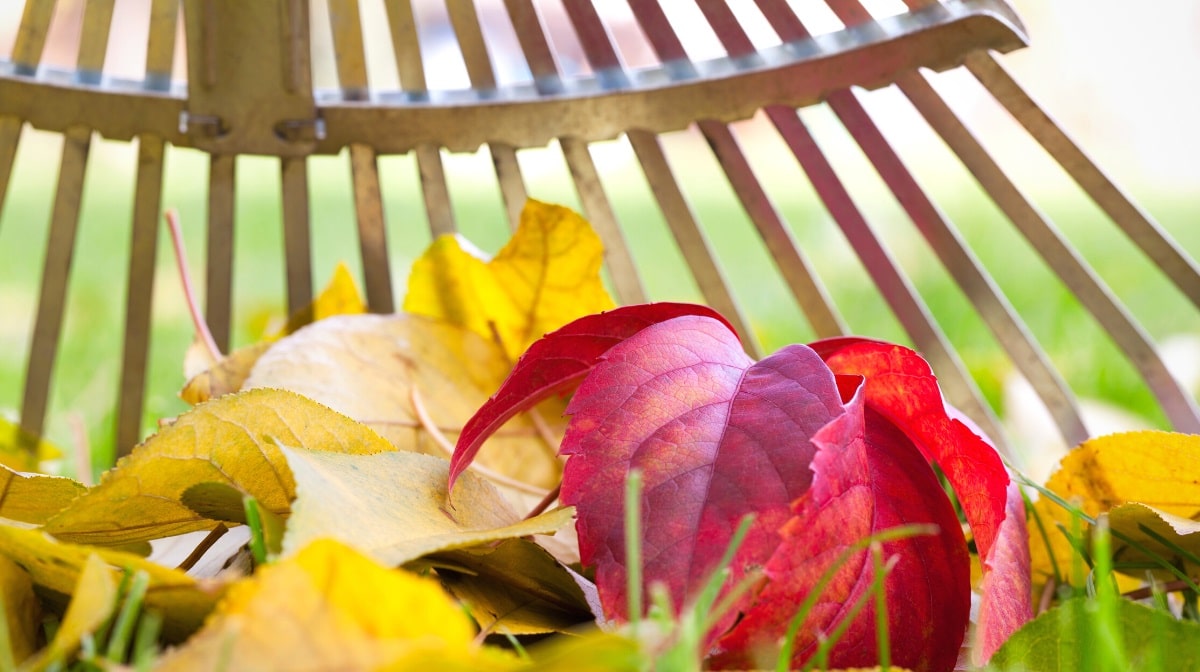Last updated: January 20, 2024
This guide explores practical tips and ways to make raking leaves much easier and more effective, plus information on what to do with the leaves you collect.
Raking leaves, some people hate it, others love it. I don’t mind doing it at all, but mostly because I enjoy being outdoors and looking after my lawn.
As simple as it may sound, there is more to raking leaves than you might think. Choosing the correct rake type, using the right technique, and raking at the right time; there is a lot to consider.
Read on, as I am going to share my top 10 tips on how to rake leaves. Further below, I will also explain why you may not even have to rake leaves.
Quick navigation:
10 Tips for Raking Leaves
Here we go, ten tips to make raking leaves easier and perhaps even a fun chore to do.
1. Choose the Best Rake
Did you know there are dozens of different rake types? They all have different purposes and are made with various materials.
To rake leaves on your lawn, you will need the most common type of rake, which is the classic leaf rake, also often referred to as a lawn rake.
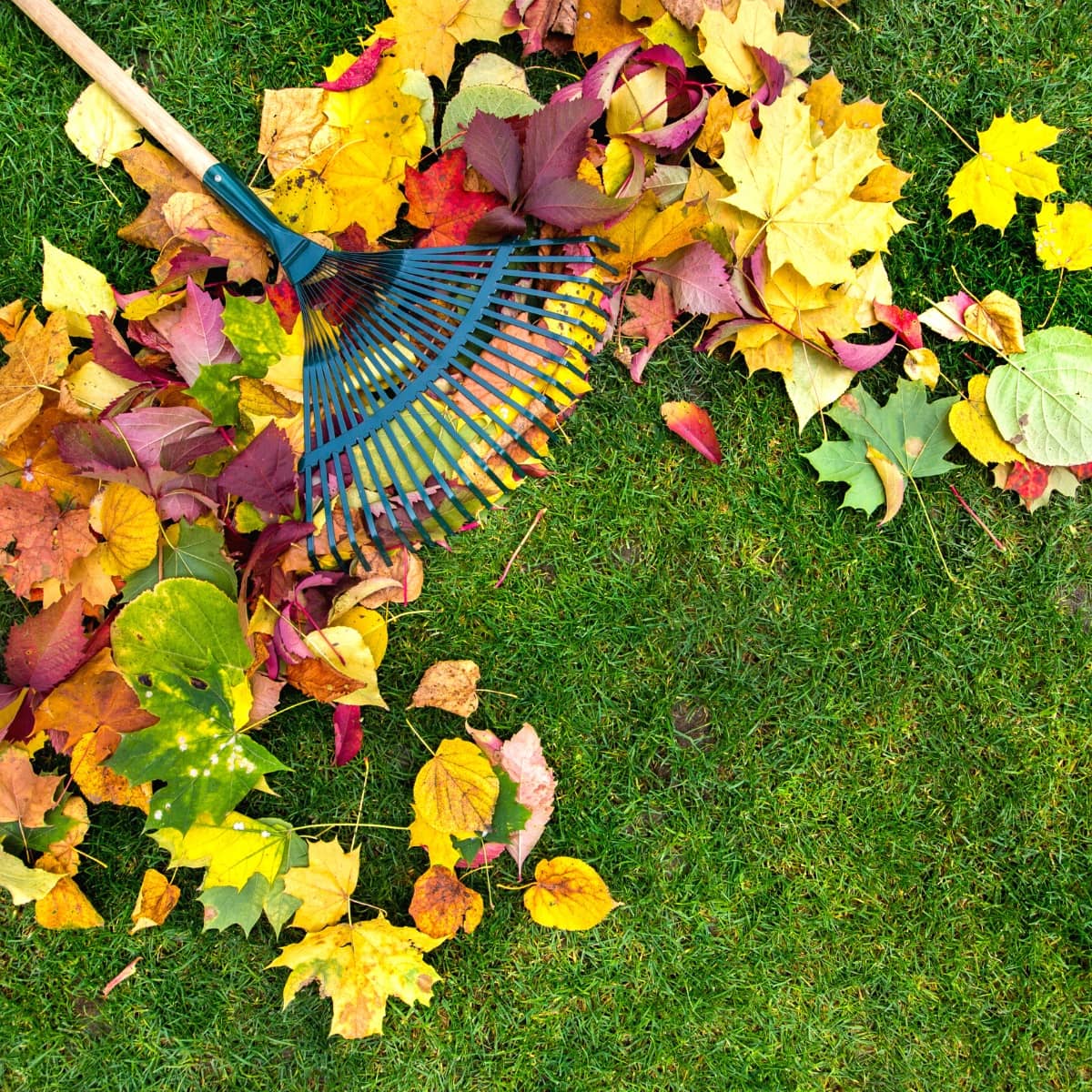
A traditional leaf rake typically has plastic tines, whereas a lawn rake has metal tines. They are priced differently, but for larger areas with heavy leaf build-up, a lawn rake with metal tines may be the best option.
Also consider the length of the handle, as it needs to be long enough to prevent you from bending over too much.
2. Time It Right
If you enjoy raking as much as I do (yes, I really do), by all means, go out there and rake leaves whenever you think there are too many of them.
But if you want to save your precious time, it might be wise to time it right, and that time is towards the end of fall/autumn when the trees have finished dropping their leaves.
This will save you time as you will only have to do this chore once and be done with it for the year.
3. Wear Appropriate Clothing
It’s easy to underestimate the effort involved in raking leaves. The bigger your lawn and the more leaf build-up, the more physically challenging this chore can become.
While a good quality rake is crucial to get the job done, wearing appropriate clothing and shoes is just as important.
- Gloves:
Wearing heavy-duty gardening gloves will help prevent blisters and will give you more grip on the rake handle. - Closed toed shoes:
Wearing closed-toe shoes will protect your feet against insects, bites, and the tines of your very own rake. - Long sleeves and pants:
Wearing long-sleeved shirts and long pants will help protect against dust and perhaps also against insects and bites. - Mask:
Wearing a mask will help against dust inhaling, which is especially useful if you have allergies.
Not all of these items will be necessary in all cases, but it’s something to consider before raking leaves.
4. Use the Wind to Your Advantage
It’s always best to go raking leaves when there is little to no wind. But if you do happen to find yourself raking leaves when there is a bit of wind, make sure to use that wind to your advantage.
I’ve made this mistake many times myself, but if you find there is some wind consistently going in the same direction, you should rake with the wind instead of against it.
5. Rake in Sections
If you have a large lawn to rake, it’s a good idea to approach raking leaves with a somewhat strategic mindset.
It’s all too easy to just start raking and work your way through all the leaves, but what you’ll find is that if you focus on smaller sections or rows, the job becomes so much easier.
This approach is easier than raking all the leaves to the center of your lawn. Not only that, but you will also be reducing the risk of collected leaves blowing away by the wind.
6. Use Small Reaching Movements
Everyone is different, but I prefer to use shorter raking movements as opposed to long and overreaching body and arm movements.
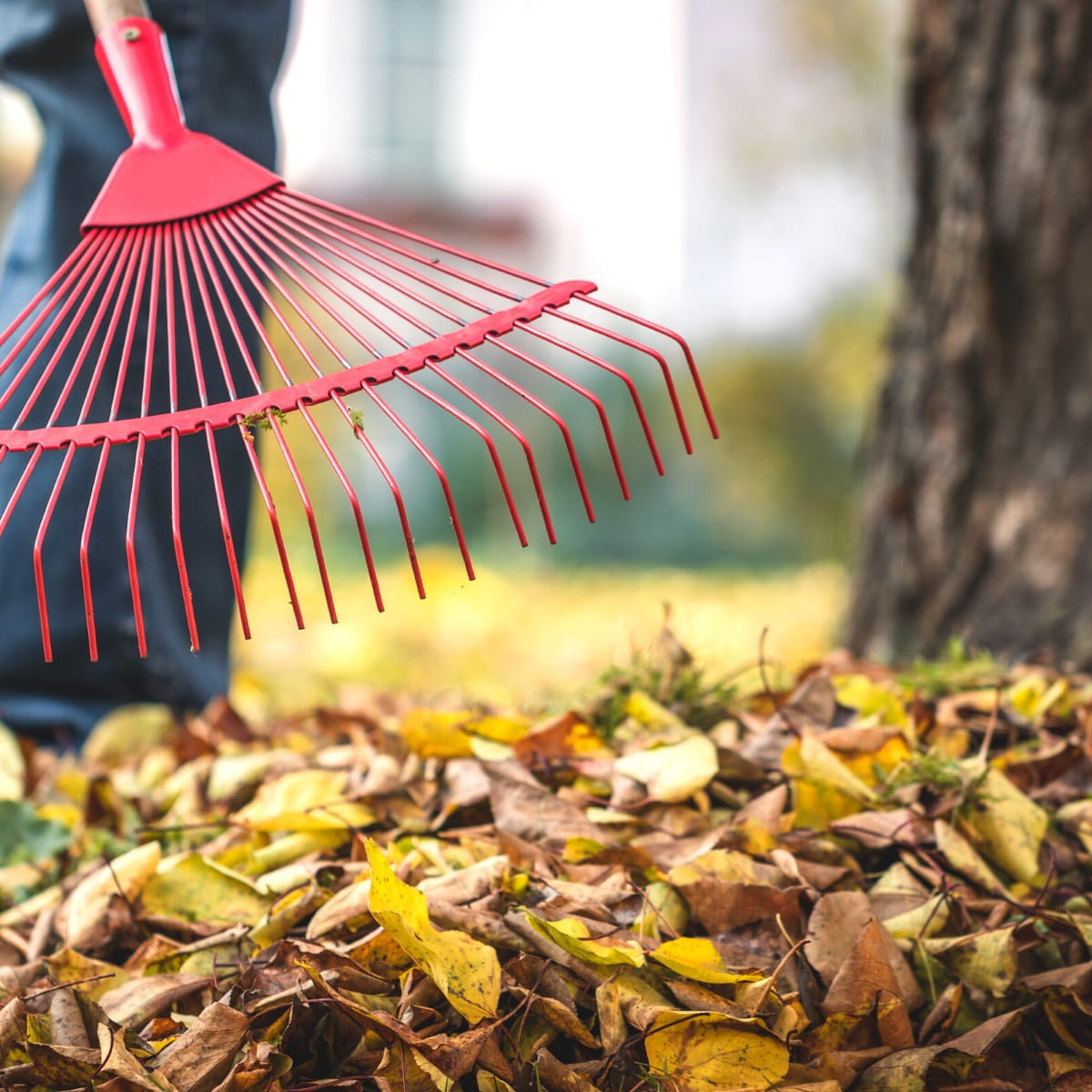
It’s much easier on the body to maintain smaller and more frequent movements than it is to maintain those longer movements, as it involves less bending and less strain on the arms.
7. Rake Before Rain
This is a classic mistake people make: not checking the weather forecast when the chore of raking leaves is high up on the to-do list.
If rain is forecasted, let’s say tomorrow or the day after, go and do that raking leaves today! Wet and soggy leaves are so much harder to clean up, and it might also take some time for leaves to dry up after rain.
Before raking leaves, always make sure the leaves are dry. Even if it hasn’t rained for a few days or even a week, leaves can still hold a lot of moisture and feel wet.
8. Bag Leaves Quickly
Rather than creating one big pile of leaves and bagging them at the very end of the raking process, it might be better to bag smaller piles.
This way, the chore of raking leaves becomes much more manageable. And not only that, but you will also be reducing the risk of that pile of leaves blowing away while you’re still raking.
9. Use a Tarp
Instead of using bags to collect leaves, you can also use a tarp. A tarp, or tarpaulin, is essentially a large sheet that you can use to rake the leaves onto.
Once you have enough leaves collected, it’s simply a matter of tying the four ends together to create a bag that you can then use to dispose of the leaves.
This approach is often more efficient because you will be able to collect more leaves at once, and there is less bending and scooping involved.
10. Use a Leaf Blower
A leaf blower can be an absolute blessing when it comes to cleaning up leaves on your lawn or backyard.
There are many different types of leaf blowers, but my personal favorite is the handheld battery-powered handheld leaf blower.
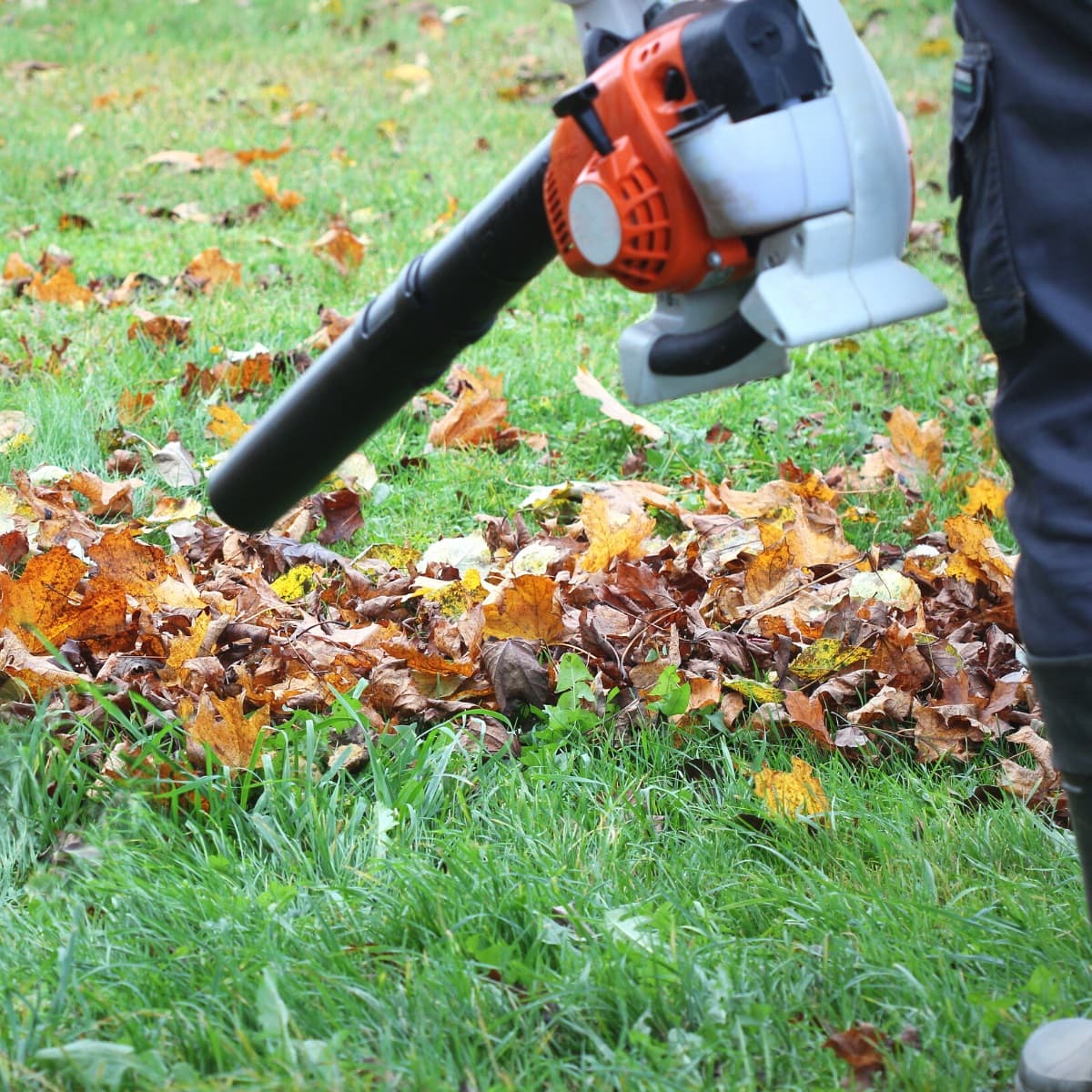
That’s the type of leaf blower that is the most environmentally friendly, is easy to use, has more than enough power for reasonably sized yards, and typically doesn’t have to cost much.
A rake and a leaf blower can also be used together. First, use the leaf blower to blow leaves in one direction, and then use the rake to do the finishing touch.
Read my leaf blowing versus raking guide for a more detailed comparison between these two ways of cleaning up leaves.
Should You Even Rake Leaves?
Yes and no.
We all want our lawn, backyard, or garden to look neat and tidy, and there is absolutely nothing wrong with that mindset. But did you know that there are also drawbacks to raking leaves?
You see, we tend to see leaves as waste, but in reality, they aren’t. Leaves serve a purpose in nature’s ecosystem.
Here are some of the drawbacks of raking and cleaning up leaves:
- Leaves are a natural fertilizer:
In a way, fallen leaves form part of the circle of life. As leaves slowly break down, they offer essential nutrients that plants can use to grow and flourish. Fallen leaves also help suppress the growth of weeds. By raking and removing leaves, you’re taking away those natural nutrients. - Leaves are a habitat for wildlife:
Leaves are the perfect habitat for lots of insects and small animals. We might think that we don’t want that sort of wildlife on our lawns, but there are also benefits to having those insects and tiny animals there. For example, they are an excellent way to attract birds to birdhouses in your backyard as they are an important food source. - Leaves don’t belong on landfills:
Even though fallen leaves are natural organic material, when they are bagged and sent to landfill, they can form methane when they break down, which is a greenhouse gas that contributes to climate change. Sadly, in the year 2018, more than 12% of municipal solid waste (MSW) consisted of yard trimmings (including leaves).
As such, if the build-up of leaves on your lawn isn’t that significant, it might be better to simply not rake and let nature do its thing.
What you can also do if there are a few leaves on the surface of your lawn is mow those leaves into your lawn. This will give your lawn more essential nutrients and will only benefit your lawn in the long term.
What to Do With Collected Leaves?
As mentioned, sometimes it might be better to just not bother raking leaves and instead let nature do its job.
However, if you do rake and collect leaves, try not to send them to landfills. Instead, do one of the following:
- Compost:
One of the best things you can do with collected leaves is to create a compost bin which can then be used as a fertilizer for your garden and yard. You might also be able to bring those leaves to a collection point, as some municipalities have compost programs. - Mulch:
Turn leaves into mulch and use that to landscape your backyard or cover flower beds. You can create leaf mulch by simply chopping up leaves with a mower.
